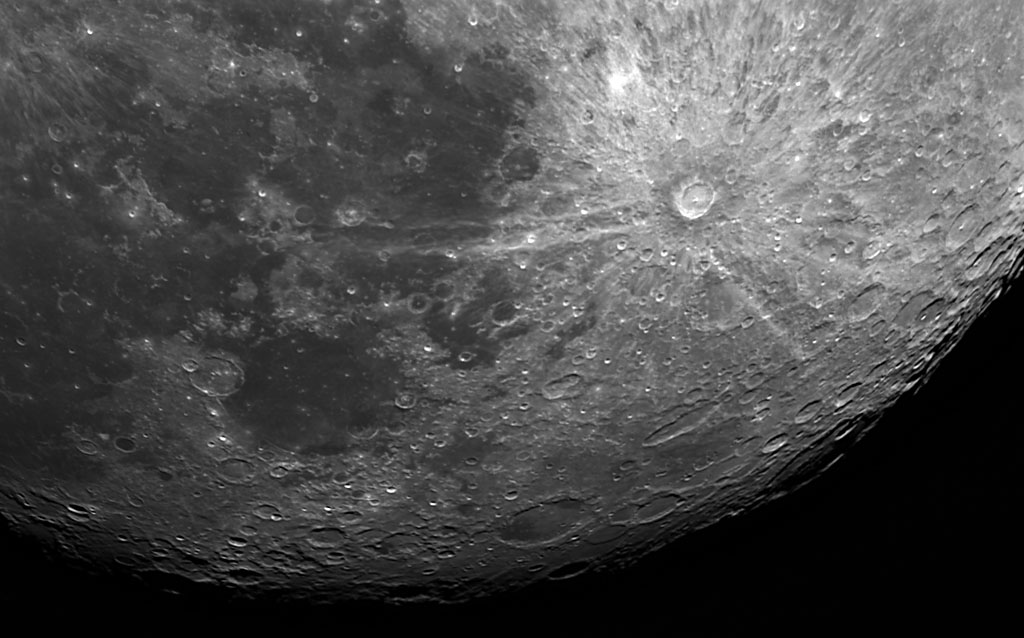We had some clear skies here for a few days, and although I’ve been too busy to stay up all night for deep-space object (DSO) photography, I had been waiting for the opportunity to try planetary imaging with the ASI174 camera I got a few months ago, and there was a transit of Io across Jupiter happening that night. I didn’t get it.
Here’s what happened: The picture above was taken well before the transit started (I think the dim spot just to the left of Jupiter is Io) with the camera attached directly to my 8″ EdgeHD telescope. This is just a 500 by 500 pixel crop from the center – Jupiter looks really tiny in the full frame. So I decided that it needed more magnification and inserted a 2.5X “barlow” (actually, a Televue Powermate, which is a little different from and better than a traditional barlow) between the scope and camera.
For planetary imaging you don’t need long exposures because the planets are quite bright, but you need to shoot a lot of frames because most of them will be corrupted by atmospheric turbulence (the same is true of Solar and Lunar imaging). The idea is to shoot video (in this case, high-definition video) then run it through software that automatically finds the best frames and extracts and combines them to form a final image that is much better than what you see in the live preview. This is called “lucky imaging” because you are relying on the chance that the air will be just right to capture a clear image in a few frames out of hundreds or thousands. The problem is that you can’t tell what you’re going to get until it is processed, so if something is wrong with the optics you can’t tell from the preview and luck will not overcome the problem. I’m not sure what I did wrong with the barlow, but all of the high magnification shots – all the shots of the transit – are horrible.
Nevertheless, this small image from early in the session is my first result from planetary imaging. It’s not horrible. Just lots of room for improvement!
But before I started imaging Jupiter I also did some test shots of the nearly-full Moon. Here is the best of those shots:
Both of these shots are monochrome – it’s a monochrome camera. Color is easily added later and does not require high quality images.
So, like the song says, I didn’t get what I wanted, but I got what I needed.

